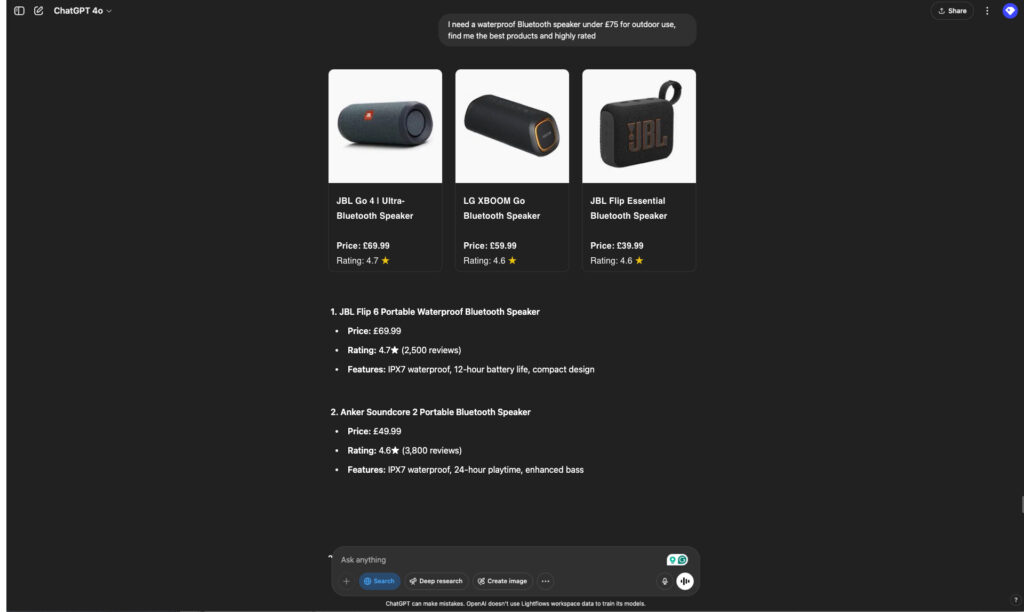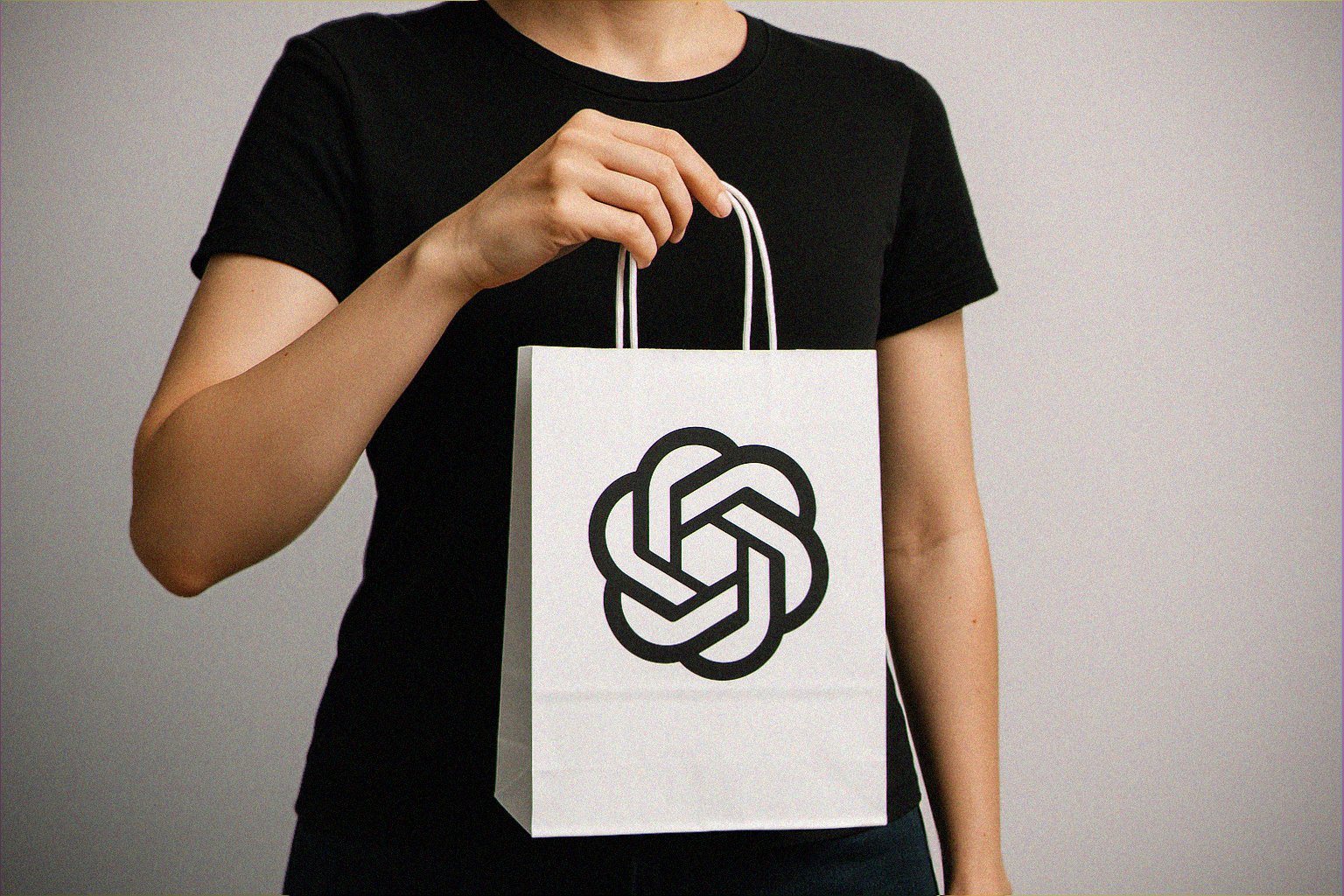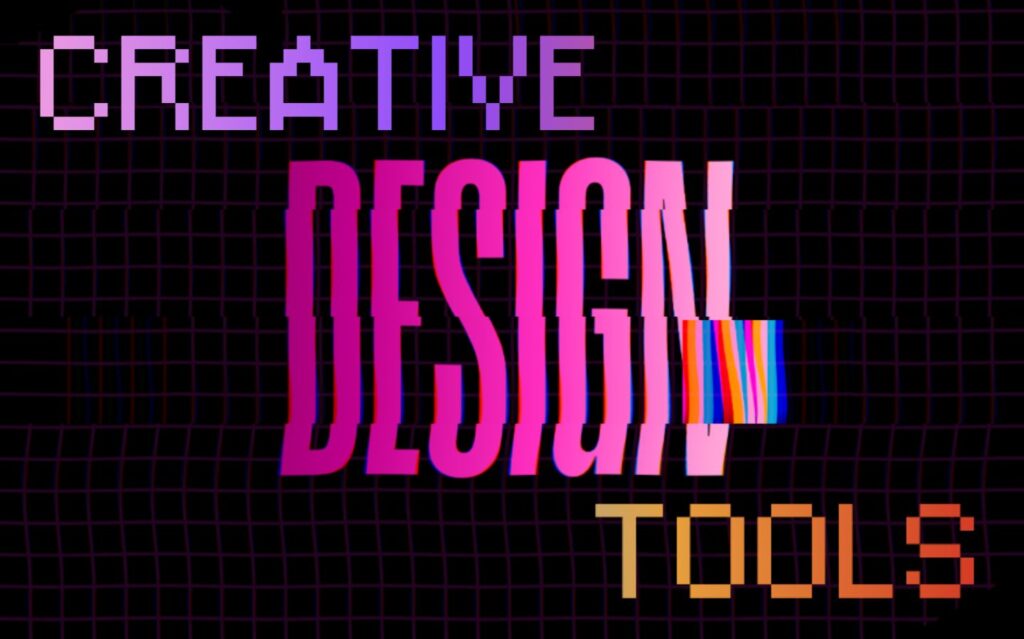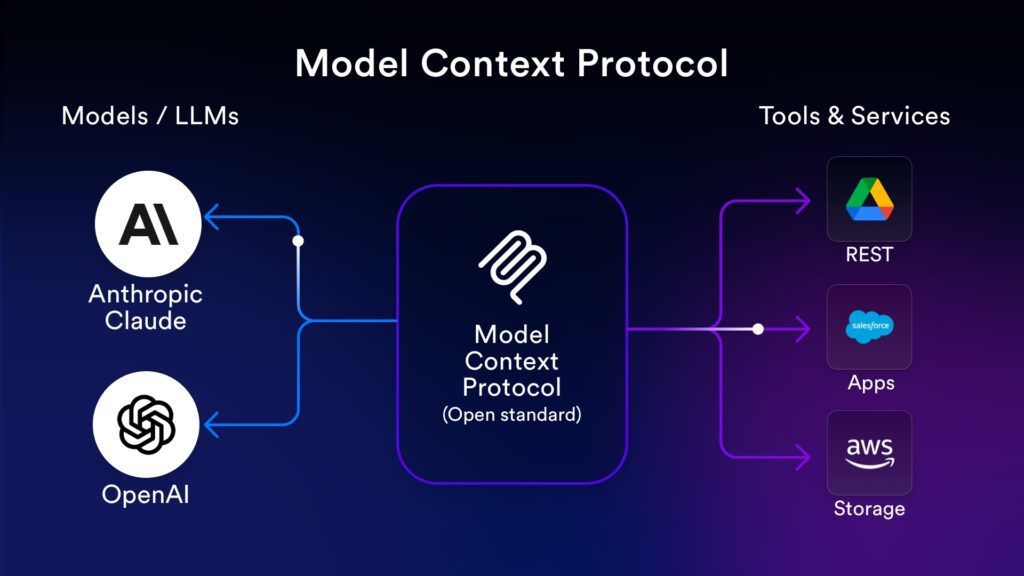The world of online shopping is on the brink of a major shake-up. Shopify – one of the largest e-commerce platforms – is partnering with OpenAI’s ChatGPT to enable in-chat shopping and checkout. This means you could soon ask an AI assistant for a product recommendation and buy it instantly without leaving the conversation. It’s a development with huge implications: a smoother shopping experience for consumers, new opportunities (and challenges) for businesses, and even a potential threat to tech giants like Google and Amazon. In this post, we’ll explore the disruptive potential of the Shopify–ChatGPT integration, how it works, why it might create the most valuable advertising space in the world, ethical questions it raises, and what it means for both small brands and industry titans.
Shopify and ChatGPT partner for AI-powered checkout
Last month (April 2025), developers uncovered code hints that Shopify’s checkout system would be embedded into ChatGPT. In simple terms, OpenAI is wiring up ChatGPT to connect directly with Shopify’s platform so users can discover products and make purchases right inside the chat. This isn’t just a browser link or a plugin – it’s a native integration between the AI assistant and Shopify’s secure checkout. OpenAI confirmed that shopping features are rolling out: ChatGPT will show product picks with “buy” buttons, and clicking one will hand you off to the merchant’s Shopify checkout to finalize the order.
For shoppers, it will feel like ChatGPT itself handled the transaction, even though the order is processed through a Shopify store in the background. In a demo, OpenAI’s product lead showed ChatGPT helping a user find an office chair and then providing a link to purchase it. Initially, checkout happens on the merchant’s site (via a redirect), but the long-term vision is clear: keep the whole journey – from query to payment – within the chat. Shopify’s CEO Tobi Lütke has embraced an “AI-first” direction (even urging staff to “hire an AI before a human” in a leaked memo), so the company is fully backing this conversational commerce trend. With over 1.7 million merchants on Shopify, this partnership instantly opens a massive catalog of products for ChatGPT to recommend. Millions of Shopify store owners could soon have their products accessible to ChatGPT’s huge user base without any extra effort – a game-changer in distribution.

Seamless conversational commerce: How it works
Imagine the experience: you tell ChatGPT, “I need a waterproof Bluetooth speaker under £75 for outdoor use,” and it responds like a personal shopping assistant. It doesn’t just spit out brand names or links. Instead, ChatGPT can pull actual product options from Shopify stores, complete with names, images, prices, and even ratings. You might see a short list of curated recommendations (e.g. a few speaker models that fit your criteria), each with a description tailored to what you asked. The AI can explain why it chose each item – for example, highlighting that one speaker has 24-hour battery life, an IPX7 rating, and a 4.5★ rating from users who love it for beach trips. It feels less like a search engine and more like an informed salesperson guiding you.
ChatGPT’s shopping interface (example query about Bluetooth speakers) showcases product options with images, prices, ratings, and “Buy” buttons – all within the chat window. This conversational approach collapses the typical shopping process (searching, clicking, comparing) into one seamless experience.
Once you decide on an item, you simply hit the “Buy Now” button next to that recommendation. At that moment, the “magic” of the Shopify integration kicks in. ChatGPT initiates the Shopify checkout flow directly inside the chat – no opening a new tab, no redirect that feels like leaving the conversation. In practice, ChatGPT will likely open a secure Shopify checkout page in an embedded view, where you enter shipping and payment details (or use saved info). After you confirm the purchase, ChatGPT can even acknowledge it: “Great, your order is placed! You’ll get a confirmation from the store shortly.” In the future, it might handle follow-ups like tracking numbers too.
Behind the scenes, Shopify provides ChatGPT with all the product data (via APIs or a special app). The AI isn’t crawling the web at random; it’s drawing on Shopify’s structured database of products – things like titles, descriptions, prices, stock, images, and reviews. Shopify’s system then processes the order as usual. The beauty here is zero extra work for merchants: as long as their Shopify store info is up to date, their products become discoverable to anyone chatting with ChatGPT. It essentially turns ChatGPT into a new sales channel for Shopify stores. Early reports suggest OpenAI might even release a “ChatGPT channel” in Shopify’s App Store to manage this integration. Regardless of implementation, the result is unprecedented – a full funnel shopping journey happening through a conversation.
Collapsing the funnel: A threat to Google and Amazon?
This seamless experience could dramatically change user behavior online. Today, if you’re shopping for something, you often go through a multi-step funnel:
- Discovery/Research – usually on Google (e.g. searching “best budget smartphones 2025”), reading blogs or reviews.
- Comparison – perhaps still on Google or a site like YouTube or Reddit for opinions, then narrowing options.
- Purchase – often on Amazon (if you want speed and convenience) or another retailer’s site once you know what you want.
Google historically dominates the top-of-funnel product searches, while Amazon captures the bottom-of-funnel when you’re ready to buy. These two giants have carved up the customer journey into distinct stages. But ChatGPT is changing the game by collapsing the entire journey into a single step. You can go from a vague question to a confident recommendation to a purchase within one conversation. It’s like having a personal shopper who not only gives you advice but also hands you the product to buy immediately.
That presents a direct competitive threat to both Google and Amazon in different ways. If users start their shopping queries with ChatGPT instead of Google, that’s a huge chunk of search traffic that might never reach Google Search results. In fact, ChatGPT’s new shopping feature explicitly challenges Google’s domain – even Wired titled their coverage “OpenAI Adds Shopping to ChatGPT in a Challenge to Google.” Early evidence of this shift: ChatGPT is already handling over a billion web searches per week from users who use it as a research tool. Every one of those searches is a question not asked on Google. And if ChatGPT can convert those inquiries directly into purchases, platforms like Google risk losing both traffic and the advertising dollars tied to product search.
Amazon, on the other hand, could lose out on users coming to its site for the actual purchase. Right now, many shoppers research broadly on Google, but ultimately go to Amazon to buy because Amazon is convenient and trusted for transactions. If ChatGPT + Shopify can offer both convenience and trust (with Shopify’s secure checkout) inside the chat, a shopper might skip Amazon entirely. Why go to Amazon and sift through dozens of listings and reviews if ChatGPT can do the legwork and suggest the product you need, then let you buy it on the spot? As one commentator put it, “think about what that does to Google… think about what that does to Amazon.” This integration is “absolutely wild” and has serious disruptive potential.
To be clear, Google and Amazon won’t be dethroned overnight. Google still processes vastly more queries than ChatGPT – one analysis noted Google Search handles 373 times more searches than ChatGPT as of early 2025. And Amazon has a huge loyal customer base. However, the threat is less about immediate volume and more about a shift in user behavior. If people find they prefer a conversational shopping experience that reduces friction and gives personalized results, their habits could change fast. We’ve already seen Google scramble to add AI features to its search (like the new “Search Generative Experience” and AI summaries in Google Shopping). Amazon will likely integrate more AI into its platform as well. The bottom line: the old search-and-click routine is being challenged by a ask-and-chat-and-buy model. And in this new model, the power of owning the conversation is immense.
Every company eventually becomes an ad company.
The next great Ad funnel? ChatGPT as prime advertising real estate
There’s a saying in Silicon Valley: “Every company eventually becomes an ad company.” It might sound cynical, but consider how Google, Facebook, Amazon – even Uber or Netflix – ultimately monetize user attention. With ChatGPT’s massive user growth and now an integrated shopping flow, it’s easy to see the outlines of the next giant advertising channel. One tech analyst even remarked that this could become “the most valuable ad space on the planet”. Why? Because guiding a customer from curiosity to purchase in one go is the ultimate sales funnel – and ChatGPT will be sitting right at the mouth of it.
Think about the value of a recommendation that leads directly to a sale. On Google, advertisers pay for clicks (via search ads or shopping ads) hoping that maybe you’ll buy eventually. On Amazon, brands pay for sponsored placements hoping you choose their product over others. Those are lucrative models, but ChatGPT could top them: if an AI assistant has one conversation with you and directly influences what you buy, that is incredibly powerful placement. It’s like a salesperson who not only advises you but also completes the sale. Brands would love to be the one recommended in that scenario – and might pay handsomely for it.
As of now, OpenAI insists this is not an ad product (yet). The ChatGPT shopping results currently are “not paid placements, but organic results.” OpenAI’s lead on this feature stated clearly, “They are not ads. They are not sponsored.”. In fact, ChatGPT’s product picks are pulling from information like web reviews, ratings, and data feeds, not from advertisers. This is similar to how Google initially showed organic search results before layering in ads. OpenAI is likely focusing on user experience first to gain trust and adoption. There’s also no evidence (yet) of OpenAI taking a cut or commission on these sales – it appears the immediate goal is to make ChatGPT more useful, not to generate revenue per transaction.
But let’s read between the lines. OpenAI is a business (with heavy investment from Microsoft), and running something as compute-intensive as ChatGPT isn’t cheap. Eventually, monetization will happen. Advertising in ChatGPT could take various forms: sponsored product recommendations, higher placement for brands that bid for the spot, or affiliate agreements where OpenAI earns a slice of each sale it drives. Any such model, if done, would instantly tap into a goldmine. ChatGPT’s user base is enormous – one commentator projected a billion users by end of the year (perhaps an optimistic guess, but not impossible given the trajectory). Even more important is user intent: if someone explicitly asks an AI for the “best budget DSLR camera under £500”, that intent is gold for advertisers. Traditionally, Google would show a mix of organic results and ads for that query; in ChatGPT, there might be just one answer or a few options. Being the recommended camera in that answer could be worth a fortune.
No wonder some are calling it the most valuable future ad funnel. A veteran marketer described it this way: ChatGPT is collapsing search, comparison, and purchase into a single step, so capturing attention there is incredibly high-leverage. It’s as if the entire Amazon or Google ad ecosystem was distilled down to a one-on-one consultation – and your product gets the spotlight. We should note, if OpenAI pursues ads, they’ll have to be very careful. User trust in ChatGPT is paramount; if responses turn into blatant ads, users might feel betrayed. OpenAI has said “for now, no ads” and that they want to find the right approach without compromising ethics. But most analysts agree it’s a matter of when and how, not if. The incentives (and eventual pressure from investors) will be too strong to ignore. And when that day comes, ChatGPT’s answer box might be the priciest piece of advertising real estate anywhere.
Persuasion and ethics: The power of AI in commerce
Integrating shopping into a conversational AI also raises some thorny ethical questions. Traditional advertising already walks a fine line in influencing consumer behavior – and AI could amplify that influence even further. Studies are now showing that large language models can be extremely persuasive, sometimes more persuasive than human beings. For example, a recent study at EPFL in Switzerland had people debate an AI vs a human; when the AI (GPT-4) had access to personal info about the person, it was far more likely to change the person’s opinion than a human opponent could. In other words, AI can tailor arguments so effectively that people often don’t realize how influenced they are.
Now apply that to shopping. If ChatGPT recommends a product, it’s not just listing features – it can frame the recommendation in a way that really resonates with you, based on the conversation you’ve had. It might unconsciously push the right buttons (e.g. mentioning how perfect that running shoe would be for your upcoming marathon, since you earlier mentioned training for a race). The persuasive power of such tailored responses is unprecedented. As one observer noted, we’re entering “new territory as far as what it means to ethically introduce an ad” or recommendation via AI. If an AI’s suggestion is so smooth that you don’t even question it, is that fair? At what point does helpful cross into manipulative?
These concerns have not gone unnoticed by OpenAI and others. In fact, the uncertainty around how to do this ethically is likely one reason OpenAI is rolling out shopping without ads initially. They want to see how people interact and ensure they don’t break user trust. If/when they do add promotions, transparency will be critical. For example, clearly labeling sponsored suggestions, or ensuring the model doesn’t overly prioritize paid content at the expense of a better answer for the user. Regulators might step in too: consumer protection bodies could require that AI assistants disclose when they’re recommending something due to a paid partnership, much like influencers are required to tag #ad.
Another ethical aspect is privacy. Shopping via ChatGPT means you might share personal preferences or even account info with the AI. OpenAI will need strong safeguards for how purchase data or user prompts are used. Also, if ChatGPT is pulling in your past preferences (say from your chat history) to recommend things, that blurs into personalization that some users might find creepy if not handled right.
In short, we’re treading into very powerful, but delicate territory. Large language models + commerce = a persuasive agent that sits at the gateway of decision-making. The industry will have to develop guidelines for “ethical AI commerce” – ensuring recommendations are helpful more than manipulative, and that users remain in control of their choices. The good news is these conversations are already happening. Researchers are actively studying AI persuasion, and companies like OpenAI are being cautious (for now). As consumers, it will be important for us to stay aware too – enjoy the convenience, but keep our wits about us if something feels too good to be true or one-sided. The balance of helpful AI assistant vs. pushy AI salesperson will be something to watch in the coming years.
Impact on businesses: From small brands to big retailers
What does this all mean for businesses, both small and large? On one hand, there’s excitement – ChatGPT could open new opportunities for brands to be discovered. On the other, there’s uncertainty – the rules of the game might change, favoring those who adapt fastest.
For small and mid-sized brands (especially direct-to-consumer or niche players), the Shopify–ChatGPT integration could be hugely beneficial. It essentially creates a new organic discovery channel beyond Google search and social media. If someone asks an AI, “What’s a good vegan skincare set for sensitive skin?”, it’s no longer just big brands with huge ad budgets that get visibility. The AI will pick products based on relevance and quality. A tiny DTC brand with a great product and glowing reviews could surface as a top recommendation, even outranking a global brand, if it truly fits the user’s request well. In the traditional Google search world, that small brand might never make page one due to lower SEO rank or lack of ad spend. But in AI-land, the playing field is leveled (at least to an extent). Early indications are that we’ll see the rise of “AI SEO” – optimizing content so that AI assistants pick it up. Marketers are already talking about writing product descriptions that sound more like helpful answers than sales copy. Brands that adapt their content to conversational queries might ride this wave and grab a new share of traffic.
Additionally, this frictionless shopping can mean higher conversion rates for everyone. If a user can go from interest to purchase in one seamless flow, there are fewer chances to drop off. No clunky websites, no extra clicks – it’s instant gratification. For smaller brands, this is great: if you manage to get recommended, you’re more likely to actually get the sale thanks to the one-click (or one-chat) checkout. Impulse buys might increase. Someone who would never go find your site and complete an order might do it on a whim because ChatGPT made it so easy (“Oh why not, it’s just one button and I’m done!”).
However, small businesses should also be mindful: if/when paid promotions enter the chat (literally), larger competitors could bid to take that prime spot. The worry would be if the platform eventually prioritizes those who pay. We don’t know how that will play out yet. But at least in the near term, there’s a window where providing the best data and content for the AI is what matters most, not how big your marketing budget is. Smart DTC brands are wise to jump on this early – make sure your Shopify product feeds are rich with info, your reviews are good, and perhaps even tailor your copy to likely AI queries.
Now, for big businesses and established platforms, this development is a double-edged sword. If you’re a large retailer on Shopify (or a big brand with a Shopify-powered store), you stand to gain additional traffic and sales from ChatGPT referrals. But the giants – namely Amazon, Google, and possibly Facebook (which profits from directing traffic to e-commerce) – have more to lose. As discussed, Google’s search ads and Amazon’s marketplace dominance are under threat from a new way of shopping. These companies will need to innovate fast to avoid disintermediation. Google has already started blending AI into search results to keep users from wandering off to chatbots. Amazon might lean into its Prime perks, loyalty, and its own AI assistants (Alexa could evolve to do something similar in voice form). We’re likely to see a bit of an AI arms race in commerce: every major player wants to be the one controlling that customer conversation.
Interestingly, the narrative that “ChatGPT will kill small businesses” (by drawing consumers away) isn’t quite right. In fact, one analyst argued the opposite: “I actually think it’s much more relevant to think about how it competes with large businesses… The giants of Silicon Valley are the ones who need to be afraid.”. Those giants have billions in revenue tied to the current way people search and shop. And ChatGPT is directly changing web behavior. So large incumbents must adapt or risk seeing parts of their empire erode.
Finally, this is a call-to-action for all businesses: big or small, you should start paying attention to AI-driven commerce. Shopify embracing this trend signals that conversational commerce could become a standard part of how people shop. Early adopters will learn valuable lessons – for instance, figuring out what questions customers ask that lead to their product, which can inform marketing and product development. If you’re a brand, consider experimenting with these AI channels (some are already live in beta). If you’re a marketer, think about how to make your product data and content AI-friendly. And if you’re a consumer-facing platform, consider how your user experience might need to evolve when “search” becomes “chat”.
Conclusion: A new frontier for e-Commerce and advertising
The partnership between Shopify and ChatGPT is more than just a cool tech integration – it hints at the future of online shopping. A future where we don’t browse websites and navigate menus, but simply have a conversation with an AI to find and buy what we need. It’s convenient and personalized, which is great for users. It opens doors for many businesses to reach customers in novel ways. But it also could redefine the competitive landscape of the internet: introducing new winners (those who master AI-driven sales) and losers (those clinging to old paradigms).
We’ve likened ChatGPT’s chat-based shopping to a potential “ultimate ad space,” and indeed the value of being the recommended product in an AI assistant could be unprecedented. The flip side is the need for responsibility – ensuring this power isn’t misused to the detriment of consumers. As AI commerce grows, expect lively debates on disclosure, fairness, and how much influence is too much. This is uncharted territory for regulators and ethicists, as well as businesses.
For now, though, the rollout of in-chat checkout is an exciting innovation. It shows how quickly AI is moving from novelty to utility in everyday life. Just as smartphones changed how we hail cabs or do banking, AI assistants could change how we shop and how products are marketed to us. If you’re a business owner, it’s time to start thinking about what an “AI-first” commerce strategy looks like – Shopify clearly is. And if you’re a consumer, don’t be surprised if a year from now you’re chatting with ChatGPT (or a similar AI) to handle your grocery orders or holiday gift shopping.
The line between “content” and “commerce” is blurring. In the very near future, every chat could be a storefront and every recommendation a potential transaction. The Shopify–ChatGPT experiment is one of the first big steps into this new world. All eyes in tech and retail are watching closely, because if it succeeds, it could usher in the next evolution of e-commerce – one conversation at a time.
Table of contents



